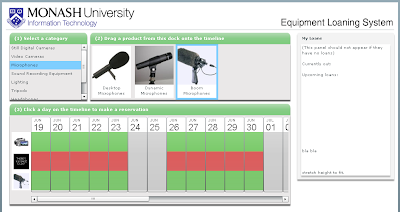Well, today is presentation day, so it is finally time to hand in the project and start sleeping at night again! The final product is looking really good, but there is a long list of improvements we could make.
Maybe we were overly ambitious in our project plan. But I think that it’s better to take on something greater and only get half way there than take on a mediocre project that you know you can do easily. Perhaps that’s not true when you’re doing paid work for a client, but it is definitely true for a uni project. We pushed ourselves this semester – with the new skills we were required to learn, and the amount of time we needed to commit.
Despite the problems outlined above, in the end we have a product that I think would be beneficial for the client to implement, because it will save them a lot of time. I also think we have a quality working prototype that we could use to approach investors if we decide to continue working on the system. It wouldn’t be much extra work to modify the system to work for different clients, so potentially this product could be sold to different universities, and anyone else who needs to loan things out on specific days. If we don’t pursue this idea, we have a quality portfolio piece anyway.












